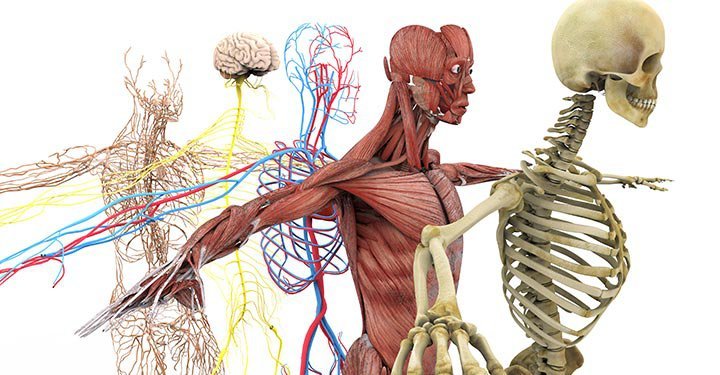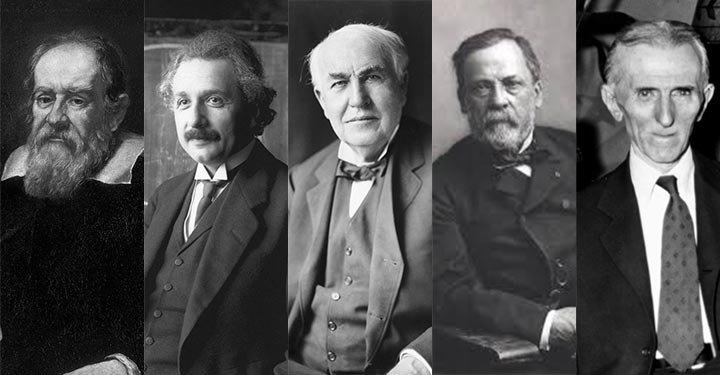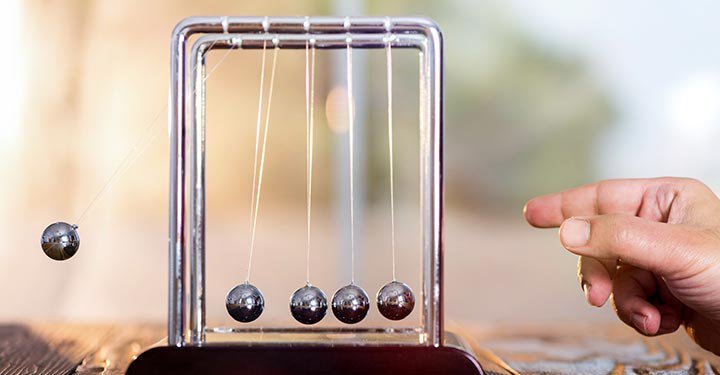Interesting And Fun Science Facts For Kids
author parentcircle author parentcircle author parentcircle author parentcircle author parentcircle author parentcircle
Is your child interested in learning science? Here are some interesting and fun science facts for kids - about the human body, space, solar system, plants, technology, inventions and more.

If your child asks too many questions, consider yourself lucky to have a gifted kid. He probably has a sharp and inquisitive brain looking for answers about everything in this universe.
Here is a long list of fun and interesting science facts to satisfy your child's quest for information.
Fun science facts for kids
1. Facts about the human body

- The weight of the human brain is about 1.4 to 1.5kg on an average. It grows fastest in the first three years of life.
- The human eye is the fastest muscle in the body. It blinks an average of 42,00,000 times a year.
- Newborn babies cry but don't shed tears until they are about one month old.
- Prolonged exposure to sounds above 90 db can lead to hearing loss in humans. Ear pain occurs on listening to sounds above 130 db.
- The human nose contains 6 million olfactory receptors which help detect about 1 trillion types of smell. Compared to humans, the sense of smell in dogs is 40 times more powerful owing to the 300 million olfactory receptors in their nose.
- Wisdom teeth are named as such because they start growing between the ages of 17 and 25, the age at which we start getting wiser.
- Humans are the only animals to have chins.
- The human heart beats approximately three billion times in an entire lifetime.
- Humans have two kidneys but only one is necessary to survive.
- The adult human body has 206 bones in total. Babies are born with about 300 bones, one-third of which fuse together as they grow.
- The femur or thighbone is the strongest bone in the human body.
2. Scientists and their inventions

- Galileo Galilei - Basic Thermometer (1593)
- Zacharias Janssen - Microscope (1595)
- Galileo Galilei - Telescope (1609)
- Evangelista Torricelli - Mercury Barometer (1643)
- Otto von Guericke - Vacuum Pump (1650)
- Anton van Leeuwenhoek - Bacteria and Microorganisms (1670s)
- Daniel Fahrenheit - Modern Thermometer (1709)
- Count Alessandro Volta - Battery (18th century)
- Humphry Davy - Electric Arc Lamp (1807)
- Charles Macintosh - Waterproof Coat (1823)
- Alexander Bain - Fax Machine (1843)
- James Francis - Water Turbine (1849)
- Louis Pasteur - Pasteurisation (1856)
- Alexander Graham Bell - Telephone (1876)
- Eadweard Muybridge - Movie Projector called the Zoopraxiscope (1879)
- Thomas Edison - Incandescent Lamp (1880)
- Rudolf Diesel - Diesel Engine (1890s)
- Wilhelm Rntgen - X-rays (1895)
- Brothers Wilbur and Orville Wright - Engine-powered Airplane (1903)
- Willis Carrier - Air conditioner (1906)
- Hans Geiger - Geiger counter to detect radioactivity (1912)
- John Logie Baird - Mechanical Television (1920s)
- John Larson - Polygraph machine or Lie detector (1921)
- Philo T Farnsworth - Modern Electronic Television (1927)
- Richard T James - Slinky spring toy (1943)
- Harry Coover - Super Glue / Cyanoacrylates (1951)
- Douglas Engelbart - Computer Mouse (1960s)
- Nick Holonyak - LED or Light-emitting Diode (1962)
- Frank Pantridge - Portable Defibrillator (1965)
- Martin Cooper -First handheld Cell phone or Mobile phone (1973)
- Robert Metcalfe - Ethernet (1973)
- Akio Morita - Sony Walkman, the first truly portable player (1980s)
- Tim Berners-Lee - World Wide Web (1989)
3. Interesting facts about space

- 'Oumuamua' is a tumbling, cigar-shaped rocky asteroid that visited our solar system in October 2017 from outer space. It is the first known interstellar object to visit our solar system.
- 55 Cancri e is a planet that is most likely made of diamond. The planet which is 40 light years away from the Earth was discovered by astronomers in 2004.
- UY Scuti is the largest star in the universe with a radius that is 1,700 times larger than the sun.
- The Halley's Comet orbits the Earth about every 75 years. The last time this famous comet was seen from the Earth was 9 February 1986 and will be visible again on 26 July 2061.
- A black hole is a mysterious gravitational force in space which absorbs everything around it, including light. A black hole is formed when a giant star explodes and collapses on itself.
- In 1957, a Russian dog named 'Laika' became the first living creature to orbit the Earth from space.
- There is total silence in space since there is no atmosphere in space and sound waves cannot travel through vacuum.
- The James Webb Space Telescope is the world's most powerful space telescope which will become operational on 30 March 2021.
- Russian cosmonaut Gennady Padalka holds the world record for spending the most time in space (878 days).
Also read: Fun Facts And Information About Astronauts For Kids
4. Solar system facts

- Temperature of Mars near the equator is around 20C during the days in summer, and plummets to ?90C during the night.
- One year in Mars is equal to 687 Earth days. Days are referred to as 'sols' in the Martian calendar.
- Venus is the hottest planet in our solar system with an average surface temperature of around 450C.
- Sunsets appear blue in Mars. This is because of the thin atmosphere and fine dust present in Mars which scatters the red light and captures the blue light from the sun.
- The distance between the Earth and the Moon is about 3,84,400 km (2,38,855 miles).
- Light takes about 1.3 seconds to travel from the Moon to the Earth.
- Jupiter, Saturn, Uranus or Neptune are known as gas giants of our solar system. All these planets are largely composed of gases such as hydrogen, methane and helium with a small rocky or icy core.
- According to the Fission Theory, the Moon was once a part of the Earth and broke away from it billions of years ago due to unknown reasons.
5. Interesting facts about physics

- A physicist is a scientist who studies physics.
- The standard SI unit for measuring a magnetic field is called 'Tesla'. It is named in honour of the great Serbian physicist, engineer and inventor Nikola Tesla.
- High and low tides in the ocean are caused due to the gravitational pull of the Moon on the Earth.
- A mirage is an optical illusion caused by refraction of light passing through layers of air at different temperatures. It can be seen where the air near the surface is hot such as deserts and roads.
- The Aurora Borealis also known as the Northern Lights can be seen near the Earth's North and South Pole. It is a natural phenomenon which occurs when the Earth's magnetic field repels tiny particles coming from the sun resulting in a beautiful display of colourful lights in the sky.
- Earthquakes are measured on the Richter scale and the Mercalli scale.
- Earthquakes happen when large pieces of the earth's crust (tectonic plates) slide against each other. This results in transmission of shock waves to the surface of the earth causing destruction to buildings and other structures.
- A tsunami, also known as harbour wave, is a large ocean wave formed due to an underwater earthquake or a volcanic eruption.
- The speed of light in a vacuum is 2,99,791 km per hour.
6. Amazing facts about chemistry

- Mars gets its red colour from iron oxide, the same compound which gives the reddish hue to blood and rust.
- Airbags contain a chemical compound called sodium azide. When a vehicle crashes, sensors in the vehicle detonate an igniter compound in the airbag canister, the heat from which causes sodium azide to rapidly decompose into nitrogen gas and sodium metal. This causes expansion of the airbag which absorbs the force of the collision and saves the passenger's life.
- Muscone is an organic compound present in 'musk', a glandular secretion of the musk deer. It contributes to the fragrance of musk which is widely used as an odourant in certain types of perfume.
- If a balloon is filled with helium, the balloon tends to float up in the air. This is because helium is lighter than air.
- Astatine is the rarest element to occur naturally in the Earth's crust. Only about 25g exists on the Earth at any given time.
- The solid form of carbon dioxide (CO2) is called 'dry ice'.
- The hardest element in the human body is tooth enamel.
- The chemical name for water is hydrogen dioxide (H2O).
- Ethylene (ethene) is a gaseous compound produced by most fruits. It helps in hastening the ripening process.
7. Interesting biology facts

- Women usually live longer than men. The genetic make-up of women is responsible for filtering out dangerous mitochondrial DNA mutations which are responsible for early ageing in men.
- The brain is more active in the night than during the day. During sleep, the brain works hard to re-energise the body for the coming day.
- Louise Joy Brown is the world's first 'test tube baby', a term given to babies conceived via in vitro fertilisation (IVF).
- The Great Barrier Reef in Australia is the world's largest living structure. It is a system of coral reefs which is home to thousands of species of marine animals.
- The biggest egg in the world is that of the ostrich. One ostrich egg is equal to 30 chicken eggs in volume.
- In seahorses, it is the males that become pregnant with babies. The females deposit all the eggs in the ventral pouch of the male when mating.
- A dragonfly's eye has over 30,000 separate lenses in the eye whereas a human has only one lens in each eye.
8. Amazing facts about plants

- The Hyperion tree is the world's tallest tree measuring 118.85m. It is located in the Redwood National Park in California.
- The Rafflesia Arnoldii is the largest flower in the world. It is also known as the corpse flower due to the very unpleasant odour it emanates.
- The Wolffia globosa is the world's smallest flowering plant. It measures about the size of a grain of rice.
- The age of a tree can be calculated by counting its rings. This scientific method of assessing the age of trees is known as dendrochronology.
- Cutting an onion releases a gas which reacts with water in our eyes to produce sulfuric acid. This causes the familiar stinging sensation in the eyes and causes tearing.
- Bamboo can grow up to 35 inches in a day making it the world's fastest growing woody plant.
- The Conius maculatum plant, also known as poison hemlock, was used to kill the Greek philosopher Socrates.
9. Amazing facts about science and technology

- The International Space Station makes 16 orbits of the Earth in 24 hours.
- Chuck Yeager, an American test pilot, was the first person to break the sound barrier.
- Dean Hachamovitch is the inventor of the AutoCorrect feature in Word, and the first word he used it to correct was "teh."
- Technophobia is the term for people who suffer from fear of technology.
- Nomophobia is the fear or worry of not being able to use the mobile phone.
- Cryptocurrency is a type of digital money which people can use to make payments online without the need of banks. The most famous cryptocurrency is Bitcoin.
- The fastest train in the world is the Shanghai Maglev which runs at a speed of 267 mph.
- Hedy Lamarr was an Austrian-American actress and inventor who helped invent the 'spread spectrum' technology which is a critical component of present-day satellite and cellular phone technology.
About the author:
Written by Dr Shyam Kumar on 4 March 2020
The author holds a degree in Homoeopathy with an MBA in Hospital Management and has worked across multiple disciplines including healthcare and technology. As a nature lover, he attended the world's first underwater CEO's conference to combat marine pollution.
Looking for expert tips and interesting articles on parenting? Subscribe now to our magazine. Connect with us on Facebook | Twitter | Instagram | YouTube
Join our Circles to share, discuss and learn from fellow parents and experts!





















Comments
Edit
Comment Flag
Cancel Update